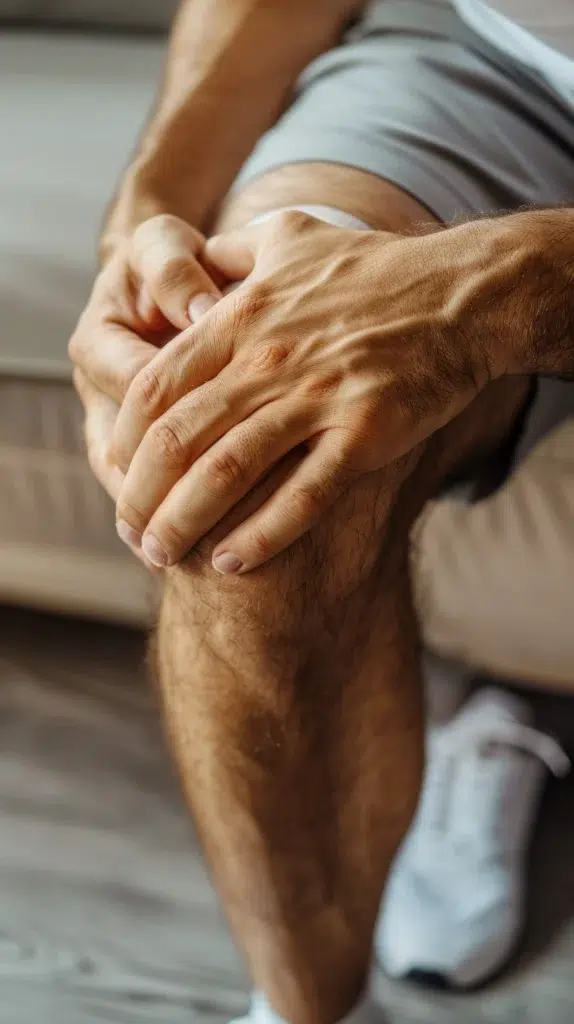Why Tear Type Matters
Not all meniscus tears are the same. The type and location of the tear play a major role in determining symptoms, treatment options, and long-term prognosis. Some tears may heal with rest and therapy, while others require surgical intervention. Certain patterns are also more likely to lead to joint instability, cartilage damage, or arthritis if left untreated.
At Kerlan Jobe Institute, accurately identifying the tear pattern is a crucial first step in building a treatment plan that preserves joint function and maximizes recovery.
1. Vertical (Longitudinal) Tear
Description: A tear that runs lengthwise along the curved edge of the meniscus, parallel to its outer rim.
-
Often occurs in younger athletes
-
Frequently located in the vascular (outer third) zone of the meniscus
Why it matters:
If detected early, vertical tears often respond well to meniscus repair because of the good blood supply in this area, which promotes healing.
2. Bucket-Handle Tear (a type of displaced longitudinal tear)
Description: A large vertical tear where the inner part of the meniscus flips inward like a bucket handle, blocking normal joint movement.
-
Common in athletes
-
Often causes locking or inability to fully extend the knee
Why it matters:
Usually requires urgent surgical repair due to mechanical symptoms. If left untreated, it can lead to long-term cartilage damage.
3. Radial Tear
Description: A tear that extends straight out from the center of the meniscus, perpendicular to its circular shape—like the spoke of a wheel.
-
Common in the lateral meniscus
-
Frequently seen in high-impact sports
Why it matters:
Radial tears disrupt the meniscus’s ability to distribute load and absorb shock. While some can be repaired, others may require partial meniscectomy if located in the inner (avascular) zone.
4. Horizontal Tear
Description: A cleavage-like split between the upper and lower layers of the meniscus, typically extending parallel to the tibial surface.
-
More common in older adults
-
Often linked to degenerative changes or repetitive stress
Why it matters:
These may be asymptomatic early on but can enlarge over time. Treatment varies based on size and symptoms; meniscectomy may be needed in symptomatic cases.
5. Complex Tear
Description: A combination of two or more tear types, often seen in patients with degenerative knees or previous knee trauma.
-
Often involves both radial and horizontal components
-
May affect large portions of the meniscus
Why it matters:
Complex tears are less likely to be repairable and may require customized surgical treatment, including meniscectomy or biological augmentation.
6. Flap Tear
Description: A small, irregular tear that creates a loose flap of cartilage, which may catch in the joint during movement.
-
Can cause sharp pain, clicking, or catching
-
Often the result of trauma or degenerative changes
Why it matters:
These tears are usually treated with arthroscopic trimming (partial meniscectomy) to remove the loose flap.
7. Root Tear
Description: A tear that detaches the meniscus from its anchor point (root) at the tibia.
-
Most commonly affects the posterior root of the medial meniscus
-
Often seen in middle-aged patients or those with knee malalignment
Why it matters:
Root tears can render the meniscus functionally useless, leading to rapid joint degeneration. These often require root repair or meniscus transplantation to preserve knee function.
Tear Location Matters Too
The meniscus has three zones based on blood supply:
-
Red-Red Zone (outer third): Good healing potential; repair is often successful.
-
Red-White Zone (middle third): Moderate blood supply; repair may be possible.
-
White-White Zone (inner third): Poor healing; repair is typically not successful.
This vascular anatomy helps guide whether a tear can be repaired or must be removed.
Why Precision in Diagnosis Is Crucial
At Kerlan Jobe Institute, we use high-resolution MRI and expert arthroscopic evaluation to precisely identify your meniscus tear type and location. This allows us to:
-
Maximize the chance of successful meniscus preservation
-
Avoid unnecessary tissue removal
-
Tailor your rehabilitation for optimal recovery

